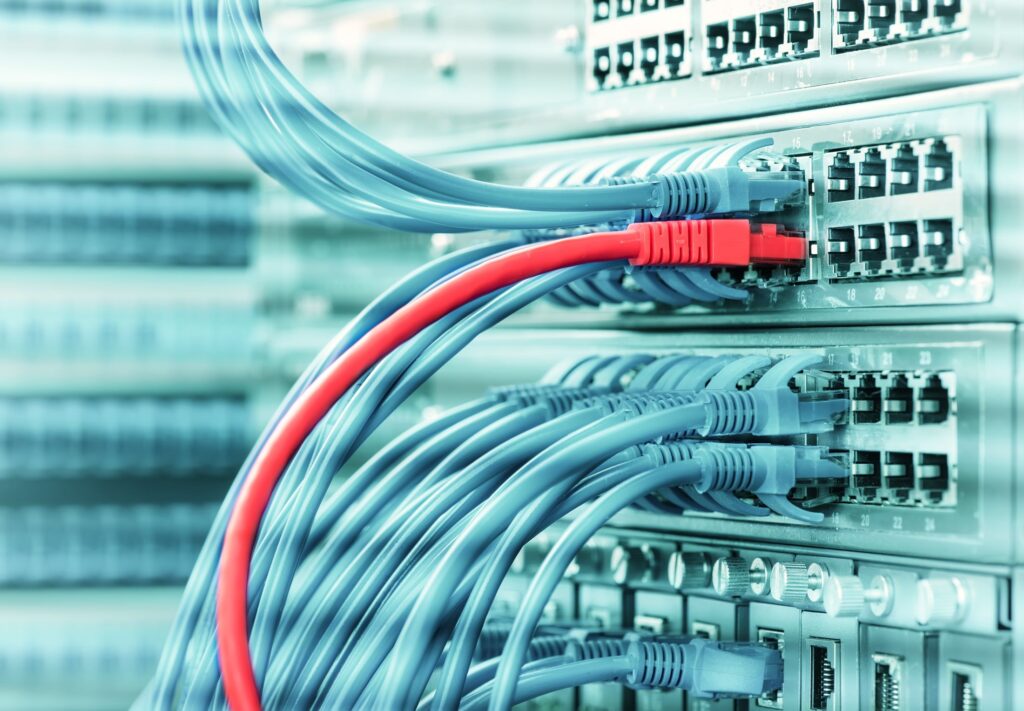Structured cabling forms the backbone of modern data and communication networks in businesses and organizations. It’s the infrastructure that connects various devices and systems, allowing them to communicate efficiently. Over time, technology evolves, and so do the demands placed on your cabling infrastructure. This begs the question: Should you update or replace your structured cabling? Here are some important factors that will help you decide.

Assess the Current State of Your Cabling
Before deciding whether to update or replace your structured cabling, it’s essential to assess its current condition. Here are some factors to consider:
- Age: How old is your existing cabling system? Technology has advanced rapidly in recent years, and if your cabling is outdated, it may not support the high-speed data transmission required by modern devices and applications.
- Performance: Are you experiencing network issues like slow data transfer, dropped connections, or poor voice and video quality? These performance issues may be indicative of cabling problems that need attention.
- Scalability: Can your current cabling infrastructure support your future needs? If your business is expanding or upgrading its technology, your cabling must be scalable to accommodate these changes.
- Compliance: Does your cabling meet industry standards and regulations? Compliance is critical, especially in industries with strict data security and safety requirements.
When to Update Your Structured Cabling
If your assessment reveals that your cabling infrastructure is still in good condition and meets your current and foreseeable future needs, updating may be the right choice. Here are some scenarios where updating is a practical option:
- Upgrading Equipment: If you’re upgrading your network equipment, such as switches, routers, or servers, your existing cabling may still be compatible with the new technology. In this case, you can update your cabling to support higher speeds or additional connections.
- Fixing Isolated Issues: If you’re experiencing minor issues like a few damaged cables or connectors, it may be more cost-effective to address those specific problems through updates or repairs rather than a complete replacement.
- Improving Cable Management: As your network grows, cable management becomes crucial. Updating your cabling infrastructure can help you organize and optimize cable routing for improved performance and maintenance.
When to Replace Your Structured Cabling
In some situations, replacing your structured cabling may be the best course of action:
- Outdated Technology: If your cabling is using outdated technology like Category 5e (Cat 5e) or below, it’s time to replace it with modern Category 6 (Cat 6) or Category 6a (Cat 6a) cabling to support faster data transmission speeds and accommodate future growth.
- Multiple Band-Aid Fixes: If you find yourself repeatedly making patchwork repairs and updates to your cabling infrastructure, it may be more cost-effective and reliable in the long run to replace it entirely.
- Major Renovations or Relocations: When your business undergoes significant changes, such as moving to a new location or undergoing extensive renovations, it’s an ideal time to replace your cabling to ensure it aligns with your evolving needs.
- Non-Compliance: If your cabling doesn’t meet industry standards and regulations, you may face legal or operational consequences. Replacing it with compliant cabling is necessary.
Consult with Professionals
Ultimately, the decision to update or replace your structured cabling should be based on a thorough assessment of your current infrastructure, future needs, and budget constraints. It’s best to consult with experienced cabling professionals, like those at Blue Star Technologies, who can conduct a comprehensive evaluation and provide tailored recommendations. Contact us today for an assessment of your current structured cabling and to learn how we can enhance your computer network.
